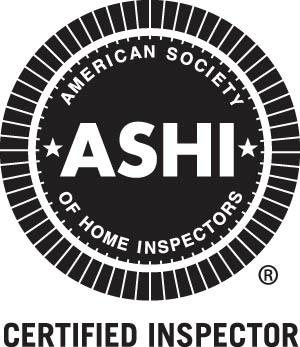I recently wrote a blog about the most common places to find gas leaks, and I said I'd follow up with a blog about gas connectors - those short, flexible, corrugated things that are used to connect gas appliances to gas piping. Today I'll go over the items that I look for on gas connectors while doing home inspections. I'll cover the most common installation defects, and I'll go over the differences between new and old connectors.

Gas Connectors are not a substitute for gas piping. To start, here's a photo of a gas connector - it's that corrugated yellow thingy. Most newer gas connectors look just like this one. Remember, a gas connector is used to get from the gas piping tothe appliance - that's all. Gas connectors should never be used as a substitute for gas piping. This means that if you ever see two connectors joined together, it's an improper installation. If you hear someone call this a flexible gas line, smack 'em upside the head and gently correct them. It's not a gas line, it's a gas connector.
Gas Connectors should never disappear in to a concealed location. If a gas connector disappears in to a wall, floor, ceiling, or cabinet of an appliance, it's an improper installation. Only proper gas piping should be run through walls, floors, cabinets, etc.


Gas Connectors need to be sized appropriately. I stopped by my favorite orange box the other day to check out their selection of gas connectors, and they had three sizes available - low demand, moderate demand, and large demand connectors. It's alright to go larger, but not smaller. The size and length of the appliance connector is determined by the BTU rating of the appliance. Most jurisdictions allow six foot connectors for ranges and clothes dryers, and three foot connectors for everything else.

Old Gas Connectors should be replaced. The current standard for gas appliance connectors is ANSI Z21.24. I tried to get a copy of those standards for this blog so I could say what what makes the newer connectors different, but it would have cost me almost $600 (get out of here!), so I did something even better. I got my hands on a new gas connector and an old one, and I cut 'em open. Here's what I found.

As you can see, they're made from different materials. The new gas connector, which complies with ASNI Z21.24, is made from stainless steel. The old connector obviously isn't - it's made from brass. To quickly spot the difference between the old and new connectors, you can usually just look at the outside jacket. Old connectors will typically have a grey coating, like the one shown above left, a braided stainless steel jacket like the type shown below, or they'll obviously be made of uncoated brass like the one shown far below.

Newer connectors are typically coated with yellow, like the one shown at the beginning of this blog, or will be plain stainless steel, like the one pictured at the bottom of the photo below. If the connector has a grey coating or is made from uncoated brass, it's old.

To know for sure, you can look closely at the nut, or sometimes at a ring that has been attached to the connector. If it meets ANSI Z21.24, it will say so.

If a gas connector doesn't meet this standard, it should be replaced. The older gas connectors are much more prone to leakage, making them a latent hazard. I've never found one that leaked, but I've heard that when they leak it's a major event. The Truth-In-Sale of Housing programs for Minneapolis, Bloomington, and several other cities require replacement of these old connectors. You can click here for Bloomington's position on old gas connectors.
Don't reuse gas connectors. According to every manufacturer, gas connectors should never be reused. When a gas appliance is replaced or disconnected, the connector should be replaced at the same time. This isn't something I look for during home inspections, just a good tip. Oh, and one other thing - don't confuse gas connectors with Corrugated Stainless Steel Tubing (CSST). They're not the same thing, and they're never interchangeable. I'll have a good blog about CSST next week.
Reuben Saltzman, Structure Tech Home Inspections - Email - Bloomington Home Inspections





Gas Connectors are not a substitute for gas piping. To start, here's a photo of a gas connector - it's that corrugated yellow thingy. Most newer gas connectors look just like this one. Remember, a gas connector is used to get from the gas piping tothe appliance - that's all. Gas connectors should never be used as a substitute for gas piping. This means that if you ever see two connectors joined together, it's an improper installation. If you hear someone call this a flexible gas line, smack 'em upside the head and gently correct them. It's not a gas line, it's a gas connector.
Gas Connectors should never disappear in to a concealed location. If a gas connector disappears in to a wall, floor, ceiling, or cabinet of an appliance, it's an improper installation. Only proper gas piping should be run through walls, floors, cabinets, etc.
Gas Connectors need to be sized appropriately. I stopped by my favorite orange box the other day to check out their selection of gas connectors, and they had three sizes available - low demand, moderate demand, and large demand connectors. It's alright to go larger, but not smaller. The size and length of the appliance connector is determined by the BTU rating of the appliance. Most jurisdictions allow six foot connectors for ranges and clothes dryers, and three foot connectors for everything else.
Old Gas Connectors should be replaced. The current standard for gas appliance connectors is ANSI Z21.24. I tried to get a copy of those standards for this blog so I could say what what makes the newer connectors different, but it would have cost me almost $600 (get out of here!), so I did something even better. I got my hands on a new gas connector and an old one, and I cut 'em open. Here's what I found.
As you can see, they're made from different materials. The new gas connector, which complies with ASNI Z21.24, is made from stainless steel. The old connector obviously isn't - it's made from brass. To quickly spot the difference between the old and new connectors, you can usually just look at the outside jacket. Old connectors will typically have a grey coating, like the one shown above left, a braided stainless steel jacket like the type shown below, or they'll obviously be made of uncoated brass like the one shown far below.
Newer connectors are typically coated with yellow, like the one shown at the beginning of this blog, or will be plain stainless steel, like the one pictured at the bottom of the photo below. If the connector has a grey coating or is made from uncoated brass, it's old.
To know for sure, you can look closely at the nut, or sometimes at a ring that has been attached to the connector. If it meets ANSI Z21.24, it will say so.
If a gas connector doesn't meet this standard, it should be replaced. The older gas connectors are much more prone to leakage, making them a latent hazard. I've never found one that leaked, but I've heard that when they leak it's a major event. The Truth-In-Sale of Housing programs for Minneapolis, Bloomington, and several other cities require replacement of these old connectors. You can click here for Bloomington's position on old gas connectors.
Don't reuse gas connectors. According to every manufacturer, gas connectors should never be reused. When a gas appliance is replaced or disconnected, the connector should be replaced at the same time. This isn't something I look for during home inspections, just a good tip. Oh, and one other thing - don't confuse gas connectors with Corrugated Stainless Steel Tubing (CSST). They're not the same thing, and they're never interchangeable. I'll have a good blog about CSST next week.
Reuben Saltzman, Structure Tech Home Inspections - Email - Bloomington Home Inspections

My cousin recommended this blog and she was totally right keep up the fantastic work!
ReplyDeleteGas Appliance Repair
Banides & Debeaurain produces and sells a super simple system calld "Tracpipe". Check it out ! http://www.banides-debeaurain.com/
ReplyDeletethe temp sensor in the room and the heater may heat up beyond its set value and may cause a fire and or CO poisoning of the occupants.
ReplyDeleteCausing the room to go from one extreme to the other as the heater is constantly trying to catch up.
That is a factor of the thermostat set points.
The aim of the sensor is to ensure the unit itself is kept at it themostat set range, not the room.Gas Appliance Repair